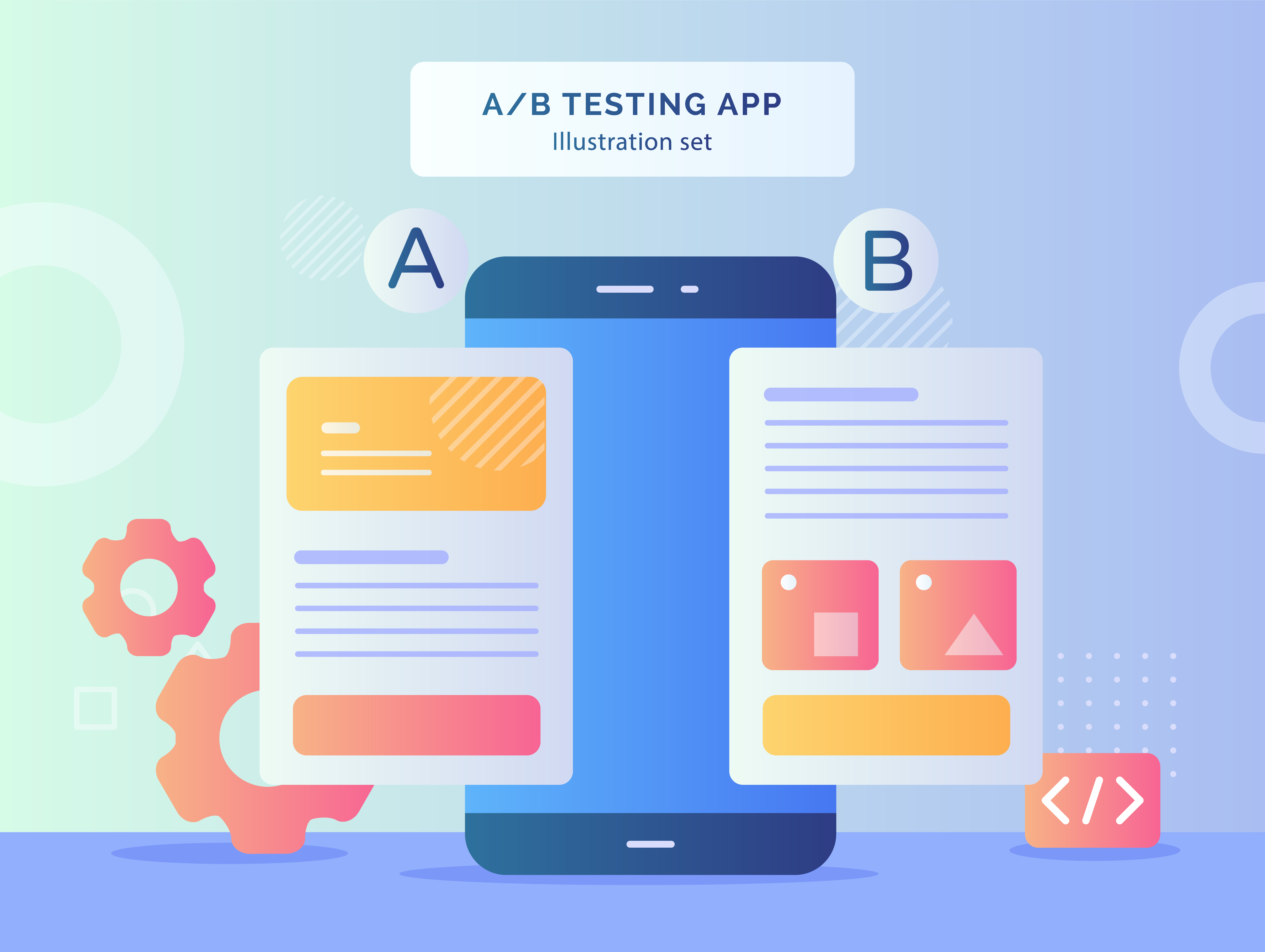Chances are your website doesn’t exist as a work of art. That’s not to say it didn’t have artists to work on it, but its purpose isn’t to just sit there and look pretty. It has an underlying goal of its visitor taking an action that benefits you and your business.
Straightforward enough, right?
It sure sounds simple, but the methodologies behind attracting the right visitor and displaying engaging content in a layout that sparks a conversion are more of a science than an art, and this science is known as Conversion Rate Optimization (CRO).
What is a Conversion Rate Optimization?
While the term does much of the heavy lifting as far as understanding what it does, the best way to define CRO is the process by which your content and website work in tandem to boost conversions by appealing to your target audience through design and substance.

The definition is somewhat broad as it pertains to whatever the goal of the effort might be (this is what we refer to as the “conversion”). Your goal might be to have your visitor sign up for your product, add their email to your newsletter, register for a webinar, or purchase a product, just to name a few.
But there’s a key to running a successful CRO methodology, and it hinges largely on one of the words in its definition.
Most people focus on the conversion aspect of CRO methodologies, but this sets you up for short-term success without a plan for long-term growth, as it emphasizes the objective over the process.
By defining a coherent process for progressing CRO, you’ll have a much higher chance of continuing to optimize your conversion past the “easy wins” that preliminary marketing can result in. An organized approach and defined methodologies in optimizing your conversion rate will yield better results as you control more variables along the way.
Again, this is a science, not an art.
The Value of Engaging in CRO
Before we discuss the ins and outs of how to implement and evolve your methodologies, let’s first certify the value of devoting resources to this initiative.
While implementing essentially any headless marketing strategy will result in some wins, failing to support this strategy with a process and a backbone makes it not only difficult to evolve, and costly to not do so.
Utilizing a CRO tool and methodology generates an eye-popping 223% return on investment (ROI). Additionally, 7 in 10 marketers use results from CRO when making other marketing decisions.
So the question is more so, can you afford to not implement CRO?
Examining a CRO Workflow
Before we discuss how we can improve our CRO efforts, let’s define an example of an optimization workflow so we can see it in action.

UX Audit
You’ll want to pour over your web page as if you’ve never seen it before. In fact, you can even hire services to do this for you, so that your own biases and understandings of your page don’t color what someone else might (or might not) see on their first visit.
A lot goes into a page’s UX, even what some might consider UI — colors, fonts, and shapes can have enormous impacts on a conversion, which is why I can’t emphasize enough that “style” might, at times, need to be toned back in favor of a measurably superior design that lacks the same flair.
Generate a Hypothesis
Following the audit, you should be able to generate a hypothesis based on tweaking or outright changing something on your site. Be sure to control what you change to limit the variables between your conversions.
For example, your call to action button might be a green, rounded rectangle that reads “Get Started”. If your hypothesis states that changing the text to “Try for Free” from “Get Started” will lead to an increase in conversions because (your proposed thinking), this stated change is the scope of work for this workflow and should be the only adjustment made during the A/B Testing phase.
Some elements you may want to consider in your A/B tests:
- Try tweaking content headers or calls to action
- Try different colors and shapes of CTA buttons
- Investigate how size and location of CTAs affect your conversions
A/B Test
It’s pivotal here that the change here is being measured based on the scope of work and that this is the only change being made. If our hypothesis is simply to change the words in the CTA, don’t go changing the button shape and color, as it introduces more variables to skew the data that aren’t controlled for.

A/B testing can be done in cohorts or simultaneously, meaning you can run A for a certain period of time and then B for the same period of time, or you can run them concurrently by segmenting your users.
Work with a creative project manager on your team to discern how best to implement the testing. However, you execute it, be sure to track the impact it made on your conversions, as this will stand to prove or disprove the hypothesis.
Note the Findings
Once you’ve concluded your A/B test (and likely implemented the winner), be sure to keep a record of your hypothesis, how you tested it, and what the metric results were. This will allow you to avoid redundant tests as well as draw informative conclusions for marketing activities (perhaps you’ll use the same call-to-action methodologies in a newsletter or landing page).
5 Tips to Improve Your CRO Efforts
Remember, the process by which you conceptualize hypotheses, implement tests, and track results will be the greatest reward over time as you can accumulate your insights and set them into action across all of your marketing efforts. Honing the process is the first step to sustainably improving the results.
1. Set Goals For Your Workflows
Setting goals both across your workflows will empower your team by adding overarching relevance to their admittedly micro-level adjustments. If Q1 is focused on improving your home page conversion rate, note your current rate at the outset of Q1 as well as the target rate for the quarter’s end.
That way, every small improvement lends towards a macro-level, measurable goal that can be celebrated if and when you achieve it.
Just make sure you give each of your hypotheses enough time to play themselves out to statistical relevance, because uneven testing times and small data sets introduce a higher ability to skew your data, thus defeating the point of these efforts.
2. Standardize Your Workflows
Ensure that the process of auditing, hypothesizing, testing, and implementing/noting your changes introduces as little turbulence as possible.
Remember, the goal here is to measure the hypothesis, and a chaotic workflow introduces stress and variables into the process.
Implementing a hybrid workflow solution that brings visibility to both the smaller steps as well as the big picture of your CRO is a great way to add predictability within the process, so you can focus on improving predictability in your conversions.
Let’s better understand it by an example, let’s say you want to implement a rank & rent strategy for a website and you have set your end goal to make $1000 by end of the year, then in order to achieve it, you need to follow a standardized process, like outreaching, link building, optimizing meta tags, etc. and stick to a fixed workflow, like spending 3 hours a day working exclusively for the project, monitoring SERP, regularly updating your content, etc.
3. Implement an Automated A/B Tool or Methodology
The ability to run A/B tests concurrently allows you to generate more information as you can conclude a test in less time.
Many email tools such as HubSpot allow you to A/B test emails, and tools such as Poptin allow you to A/B test campaigns on your website intelligently.
Since A/B testing is the crux of CRO, the more effective you can make its implementation–especially through the use of automation–the better.
4. Verify Your Hypothesis Results
While many of the small tweaks that will lead to conversions may be subtle and have subconscious impacts on your leads, others may be somewhat drastic.
Changing key phrases on a landing page to emphasize market segments, leverage social proof, or portray value through either statistics or monetary incentives (a free trial, for example) can lead to very conscious conversions from your leads.
Simply put, a lead is more likely to consciously convert because you backed up your claim with metrics rather than because your CTA was green.
That said, the ability to certify your hypothesis by surveying conversions on why they pulled the trigger on your desired action will add conviction when utilizing this conversion strategy amongst other collateral, pages, and channels.
5. Be Serious About Documentation
The more you note as you track your audits, hypotheses, implementations, the more value your logs have when making future marketing decisions based on previous data.
This is what separates crude CROs from elite ones, as they can snowball their understanding to move outside of the “quick wins” and into more advanced conversions by relying on previous understandings.
Your notes should track:
- The results of your audit
- The hypothesis (be sure to include the why when proposing the change)
- How you A/B tested (the exact language or screenshots here are imperative)
- The metrics, including the difference between them
- The decision made based on the metrics, as well as the reason for the decision
In Conclusion
Your CRO results are likely as good as the process by which you generate, test, and notate your process.
Before you go A/B testing with reckless abandon, define a process as well as long-term goals so you can sustainably improve your conversions rather than convert a handful more leads without a true understanding as to why.
There is a bevy of tools handy that you can utilize to create a scalable, repeatable process in formulating hypotheses, implementing the A/B test, and analyzing and noting the results. Just remember, the limiting factor to your CRO is your commitment to the process.
Author’s Bio
Samuel Goldstein is a member of the marketing team at Nifty and helps craft the team’s digital marketing strategy. In his spare time, Sam enjoys playing Soccer and hiking in upstate New York.




